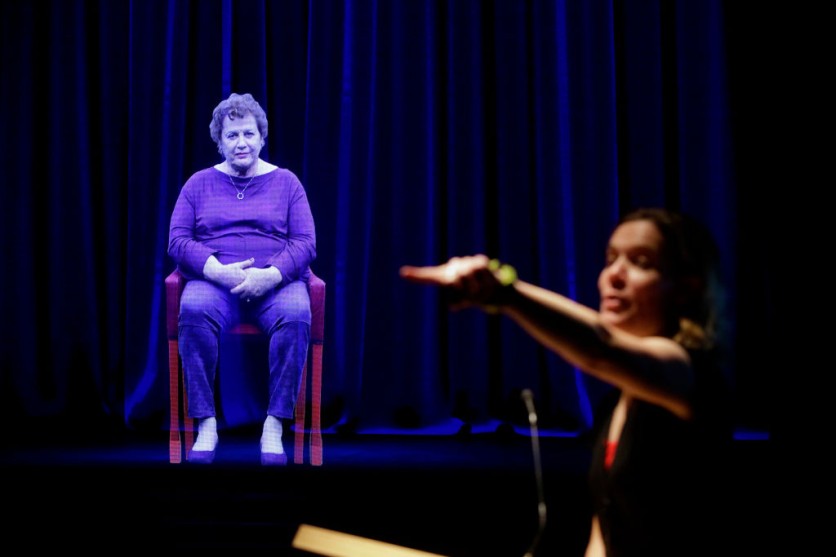Talking to your deceased loved ones through artificial intelligence is no longer science fiction.
An elderly English woman who passed away at the age of 87 was able to speak at her burial through an AI-powered hologram, as reported first by Analytics Magazine.
"Come Alive"
Holocaust activist Marina Smith MBE, from Nottingham, England, was born in Kolkata, India, on November 16, 1934. She died in June 2022, but she later resurfaced as a hologram that seemed to "come alive."
With the use of an AI "holographic" video technology, the departed 87-year-old was able to communicate with her loved ones at her burial.
When Smith was alive, she recorded the tapes for two days in January, recounting everything that transpired in her life.
The technology for the conversational video was developed by StoryFile, a cloud-based, autonomous video platform that enables anyone to interact with the person featured in the video.
This invention was the brainchild of Stephen Smith, CEO, and co-founder of StoryFile, who also convinced his mother, Marina Smith, to use the technology.
"I just wanted to be able to sit across from an individual who might not be with us anymore and feel as though I was having a conversation with them," CVO and Co-Founder of StoryFile Heather Malo-Smith said in a statement.
The Los Angeles-based start-up was established in 2017 and it has let users make videos that could respond to viewers' inquiries by playing pertinent video snippets as answers to those questions.

Read Also : Alzheimer's-Diagnosing AI Better Than Medical Experts? New Study Shows It Can Solve Physician Shortage
Real-Time Communication
The original idea behind this technology was to use it to interview historical figures and record the testimonies of Holocaust survivors. This proved to be true when Smith was revived in the holographic video.
To capture the topic in detail for holograms, the company combines the most advanced studio equipment with 20 synchronized cameras.
It generates a digital clone that enables people to speak to the dead with the aid of cutting-edge AI and professional psychological analysis.
Real pre-recorded answers to questions are used by the StoryFile system. In sum, this technology enables people to have real-time communication.
The person who is creating their StoryFile is first filmed while responding to questions about their life. Modern sound technology, depth kits, and unique 3D technology are employed to make this possible.
Afterward, a group of professionals will process the video. The completed work will be posted on the StoryFile portal to let people have a conversation with the subject.
The system is also compatible with all linked devices, including 3D and virtual reality systems, according to the developers.
Famous people have also decided to use the platform to record the stories of their lives. William Shatner, best known for his role in Star Trek, has shared secrets about the TV show but it will only be made public once he dies.
Related Article : New AI That Predicts Heart Attacks Could Save Patients From Cardiac Death For 10 Years
This article is owned by Tech Times
Written by Joaquin Victor Tacla
ⓒ 2025 TECHTIMES.com All rights reserved. Do not reproduce without permission.




